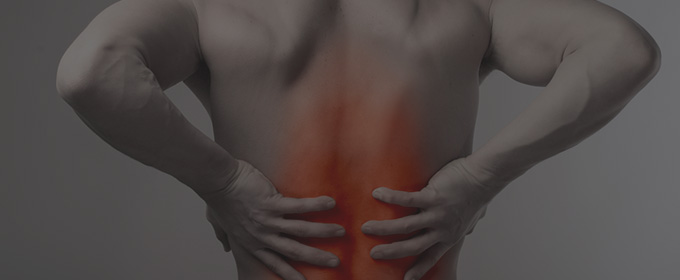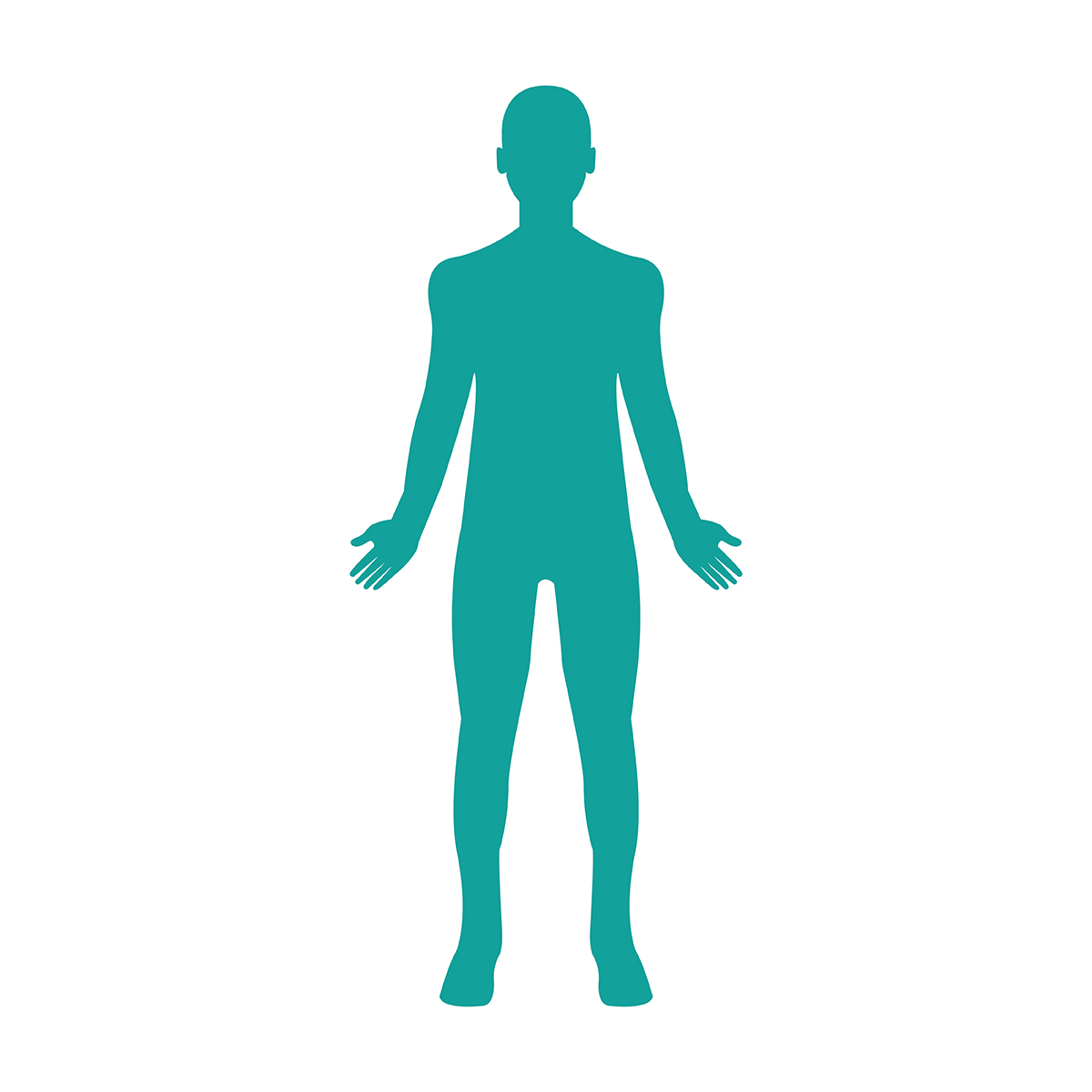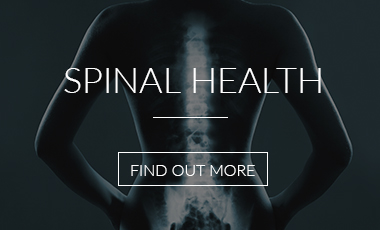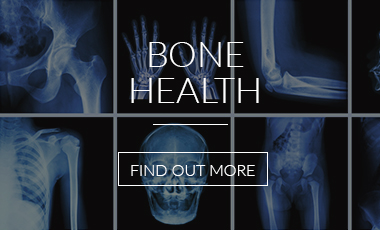Back pain is an extremely common complaint. An estimated 60-80% of people in the UK are affected at some time in their lives and it can strike anyone at any age. Each year close to 5 million working days are lost due to back pain. The spine is composed of a number of elements and therefore there are a number of potential sources of pain.
The spine is made up of many small bones called vertebrae. These are separated by discs, which allow the spine to bend and take the load through the body. Vertebrae and discs are supported along its length by muscles and ligaments. The spinal cord threads through the centre of each vertebrae, carrying nerves from the brain to the rest of the body. The joints at the back of each the vertebrae, one on the left and one on the right, are called the facet joints. These can become inflamed easily and have many pain fibres. Arthritis can develop here.
Sources of back pain
Pain can come from disc problems, facet joints, nerves, bone, muscle or ligament. Early identification of the sources of the pain helps to provide a focussed treatment plan for short and long-term benefit.
Back pain may be associated with other symptoms – it may radiate into the legs due to nerve irritation. When severe and in certain situations this can be due to a slipped disc.
In a relatively small number of cases, back pain may have a more serious underlying cause. This includes abnormality of the spine, an infection or a collapse of the vertebrae, fibromyalgia (a condition that affects the muscles), infection or cancer.
When to see a doctor
Most attacks of simple back pain last only a few days and get better on their own. However, if you are having repeated episodes then a clear identification of the specific problem via a medical assessment is appropriate in order to devise customised treatment.
Anyone with the following symptoms in addition to back pain should see a doctor as soon as possible:
Fever
- Redness or swelling on the back
- Pain down the legs and below the knees
- Numbness or weakness in one or both legs
- Loss of bladder or bowel control
Additionally, a doctor should also be consulted if:
- Pain lasts longer than a week
- Pain is the result of an injury, a fall or a blow to the back
- Pain lasts for more than a few days in someone aged under 20 or over 55
Diagnosis
In many cases, the doctor will only need to discuss the symptoms and carry out an examination. The doctor is likely to recommend more tests only if the pain lasts longer than six weeks, or if there is suspicion of an underlying cause of the pain.
These tests might include X-rays, CT (Computerised Tomography) scans, MRI (Magnetic Resonance Imaging) and blood tests.
Psychological wellbeing can also play a role in back pain. If the condition is chronic, the doctor may also recommend psychological and social assessment.
Treatment
Stay Active
Research shows that bed rest does not help simple back pain – it’s much better to return to normal physical activity as soon as possible. Staying active may hurt more at first, but it helps the back to heal quickly, and reduces the risk of the problem occurring again.
If the pain is so bad that taking to bed really seems the only option, keep bed rest as short as possible before getting up and about again.
Specific exercises are also important to take the load away from the spine. They are not a quick fix solution, although some exercises can provide quick relief.
Painkillers
Medications of various forms may be appropriate over the short term and may help to keep you active, which is very important.
Injections
Local injection therapies can be very helpful for some specific complaints, but these need to be carefully discussed with your doctor.
Manipulation and Exercise
Osteopathy and chiropractic are treatments involving manipulation of the spine. They may provide short-term relief for simple back pain within the first six weeks. The Alexander Technique may help improve posture. Some people find that acupuncture helps with the pain, although there is no definite scientific proof of its effectiveness. Also, because back pain can sometimes be related to emotional problems, counselling may also be helpful.
Other methods of treatment
Denervation procedures for spinal pain
Surgery is necessary only in the tiny minority of cases, for specific situations. Treatment of back pain arising from the facet joints may include radio frequency denervation of the nerves supplying the affected joints. As the nerves supply more than one joint, it is necessary to treat more levels than those directly affected. This is usually very effective and may last nine to twelve months. The treatment can be repeated if required. The denervation is performed by a pain specialist and involves applying electric current to the nerve to cauterise it.
It is not unusual for this painful condition to affect different areas of the spine e.g. neck and the lower back. Also severe low back pain may arise from the sacroiliac joints below the spine. This may be felt in the buttock/s and the legs and be mistaken for sciatica. Radio frequency denervation is also used to treat this type of pain.
Radio frequency denervation is done in an operating theatre under sedation or light anaesthetic. X-ray or fluoroscopy is used to identify correct electrode placement and local anaesthetic with a steroid drug is injected to assist in post-operative recovery.
Normally you can expect to be discharged several hours following the procedure but in some situations a night in hospital is needed. Moderate pain can be expected and agents such as Panadeine or similar should be available. Pain may take up to two weeks to settle fully.
Like every medical treatment, there is no guarantee of success.
A Cochrane Review, considered to be a ‘gold standard’ in reviewing medical evidence, concluded that: radiofrequency denervation can provide short-term pain relief for a small proportion of people with specific joint problems in the neck. There is conflicting evidence about effects for low-back joint pain, and some evidence that it does not relieve pain from low-back disc problems. It is not clear what ‘short-term’ means!
It is more likely that you will have a positive outcome if you have responded to corticosteroid injections to the facet joints.
Although the duration of benefit from denervation is longer than with steroid injection, there is a chance the denervation may need to be repeated.
Managing back pain
Good back care can greatly reduce the risk of back pain. To look after your back, make sure you:
- Take regular exercise
- Use a chair with a backrest, and sit with your feet flat on the floor or on a foot rest
- Sleep on a firm mattress
Lifting and carrying tips
- Lift only a manageable weight, or ask for help
- When lifting things or putting things down, bend the knees, and keep the back straight and feet apart
- Do not lift and twist at the same time
- Lift and carry objects close to the body
Denervation procedures for spinal pain
Surgery is necessary only in the tiny minority of cases, for specific situations. Treatment of back pain arising from the facet joints may include radio frequency denervation of the nerves supplying the affected joints. As the nerves supply more than one joint, it is necessary to treat more levels than those directly affected. This is usually very effective and may last nine to twelve months. The treatment can be repeated if required. The denervation is performed by a pain specialist and involves applying electric current to the nerve to cauterise it.
It is not unusual for this painful condition to affect different areas of the spine e.g. neck and the lower back. Also severe low back pain may arise from the sacroiliac joints below the spine. This may be felt in the buttock/s and the legs and be mistaken for sciatica. Radio frequency denervation is also used to treat this type of pain.
Radio frequency denervation is done in an operating theatre under sedation or light anaesthetic. X-ray or fluoroscopy is used to identify correct electrode placement and local anaesthetic with a steroid drug is injected to assist in post-operative recovery.
Normally you can expect to be discharged several hours following the procedure but in some situations a night in hospital is needed. Moderate pain can be expected and agents such as Panadeine or similar should be available. Pain may take up to two weeks to settle fully.
Like every medical treatment, there is no guarantee of success.
A Cochrane Review, considered to be a ‘gold standard’ in reviewing medical evidence, concluded that: radiofrequency denervation can provide short-term pain relief for a small proportion of people with specific joint problems in the neck. There is conflicting evidence about effects for low-back joint pain, and some evidence that it does not relieve pain from low-back disc problems. It is not clear what ‘short-term’ means!
It is more likely that you will have a positive outcome if you have responded to corticosteroid injections to the facet joints.
Although the duration of benefit from denervation is longer than with steroid injection, there is a chance the denervation may need to be repeated.
Prevention tips
Avoid smoking
Smoking is a risk factor for back pain. It is believed that smoking decreases the circulation to the lower back discs which can cause them to crack and rupture.
Maintain a healthy weight
Obesity may contribute to back pain by causing the lower back curve to arch too much.
Minimise your stress
Stress can cause or aggravate back pain.
Try these strategies:
- Take a break every 20 minutes when studying or working on the computer.
- Practice time management.
- Try relaxation techniques like the following:
- Lie on your back, eyes closed, knees bent and arms resting at sides.
- Inhale through your nose, and then exhale through your mouth.
- Concentrate on breathing slowly and deeply for a couple of minutes.
- While continuing the breathing pattern, slowly press your lower back against the floor, hold 2-3 seconds, and then relax.
- Practice breathing and tensing/relaxing lower back muscles until you feel relaxed.
Cardio exercise for a healthy spine
Aerobic exercise is recommended in addition to stretching and strengthening. In fact, a sedentary lifestyle is often a cause of back/neck pain. Aerobic exercise utilises large muscle groups (i.e. legs) or multiple muscle groups (i.e. legs, arms and trunk), is rhythmical in nature, and is performed continuously over a period of time. Try to commit to an active lifestyle that extends into all aspects of your day, such as:
- Walking or biking instead of driving or taking the bus
- Taking the stairs
- Parking your car a few streets away from your destination and walking
- Taking a walk every 30 minutes, instead of sitting for long periods of time studying or working
Exercise Formula for Healthy Living & Healthy Spine
Activity: Exercise doesn’t need to be vigorous or continuous, so try to increase the activities that you do on a daily basis. Biking, walking or upright water exercise is less stressful on the back, so they are preferred over swimming, stair climber machines and jogging if you have back problems.
Daily: Do at least 60 minutes of physical activity. Activities can last for one minute 60 times a day or any other combination totalling 60 minutes.
Ideas for Daily Living
Be mindful of your posture during daily activities like standing, sitting, and sleeping. Your posture habits can cause some muscles to tighten and others to weaken.
Ideal sitting posture promotes a normal “S” shaped curve. Use a pillow or towel roll to support the lower back. In a car, sit with your knees slightly higher than your hips.
Slouch posture grossly increases and/or flattens the spinal curves, resulting in soft tissue tightening or weakness.
Sleeping
A firm mattress promotes proper sleeping posture. Place a 3/4 inch plywood board under a soft mattress to increase its firmness.
Lying on your side, with knees bent, supports the natural curve of the back. Use a flat pillow to support the neck, especially if your shoulders are broad.
Sleeping on the stomach can increase the lower back curve and stress the neck and shoulders. If you must sleep on your stomach, place a pillow under your hips to support the lower back.
Sleeping on your back is restful and correct when the knees are properly supported.
Packs and Sore Backs
Wearing heavy backpacks or placing them over one shoulder can add to back pain. It can also increase your risk for upper back and shoulder pain. Keep the load light and carry the pack over both shoulders.
Bicycling and Your Back
Adjust bicycle handlebars and seat to support correct posture. Upright handlebars, rather than racing types will place less stress on the lower back.
Footwear
Wear flat-soled shoes with firm arch support. High heel shoes increase the forward curve of the lower back. Don’t stand in one place too long; shift your weight and change positions. When walking or standing, remember the three curves of the back and practice correct posture.
Neck Tips
Do not lean over your work, hobbies, projects, etc. Angle your work so that you can look straight ahead, or sit closer to your work area. Do neck exercises throughout the day. Try frequent “mini-breaks” to relieve tension. Avoid overhead reaching, use a ladder or step-stool instead.
Pregnancy
During pregnancy, hormones slightly loosen tissues that hold the vertebrae together. The added weight can also cause strain. Consult your doctor if you experience back problems.
Caring for your Back or Neck
While dull aches can be annoying and even ignored, severe pain or pain present with other symptoms may indicate a more serious condition.
Call a doctor if your pain involves:
- An accident
- Fever – may indicate an infection
- Frequent, painful or bloody urination – may indicate a kidney problem
- Shooting pain down the back of a leg, from the hip down to or below the knee – may indicate a disc problem or pinched nerve
- Numbness or tingling in arm(s) or leg(s) – may indicate a nerve or disc problem
- Weakness or paralysis in an arm or leg – may indicate a nerve or disc problem
- Persistent pain that can’t be relieved – may indicate a serious back disorder or injury
- Changes in bladder or bowel function – may indicate an internal organ problem
- Changes in menstrual cycle
- Changes in skin colour (yellow) – may indicate an internal organ problem
Self-Care for Back or Neck
If you haven’t experienced any of the above symptoms, you can try self-care to ease pain and promote healing.
First 48-72 Hours
- Ice (15-20 minutes, 3-4 times per day)
- Paracetamol
- Rest from painful activities
- Walk or perform other low stress exercise
- Minimal bed rest
After 72 Hours
- Moist heat 15-20 minutes, before exercising
- Back, abdominal, and hip stretching exercises
- Back and abdominal strengthening exercises
- Paracetamol or Ibuprofen
Using Ice and Heat
To relieve initial pain, you can use an ice pack for 15-20 minutes every two hours for the first 72 hours. Avoid lying on the ice pack, as it could freeze the skin. After the first 72 hours, moist heat, such as a hot shower, bath, wet towels, or hot water bottle, may help relax muscles prior to stretching exercises. Apply 15-20 minutes every few hours.
Massage
Massage helps increase the blood flow to your muscles and helps muscles relax. You may want to consult a massage therapist for assistance.
Medication
Paracetamol, ibuprofen, and aspirin can help reduce pain. Follow the label for recommended dosages and frequency. Inform your doctor of any drug allergies or adverse reactions.
Rest
Rest from painful activities, but resume daily activities such as walking as quickly as possible. Muscles and other tissues will stiffen and weaken if you avoid exercise for too long.
Exercise
As pain decreases, try the exercises listed in the information sheets (available for download). Slight discomfort is normal. Gradually increase the amount, intensity, and frequency of exercise as tolerated.









